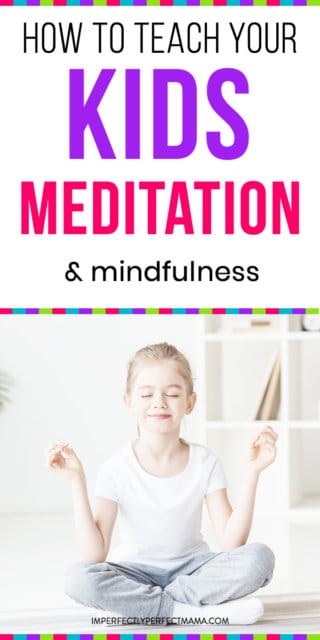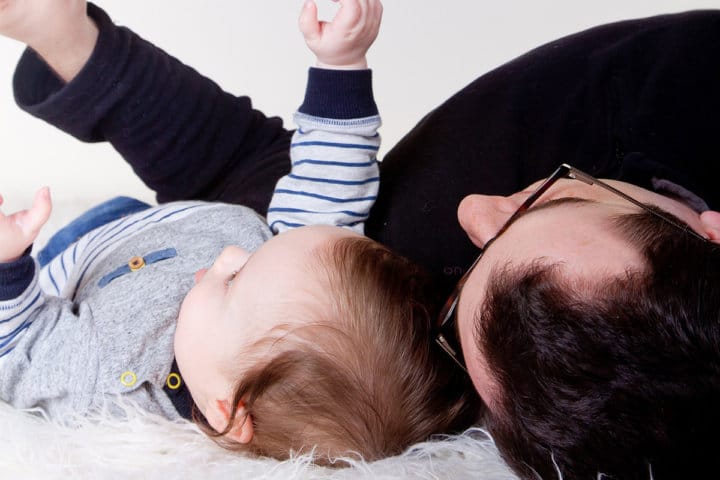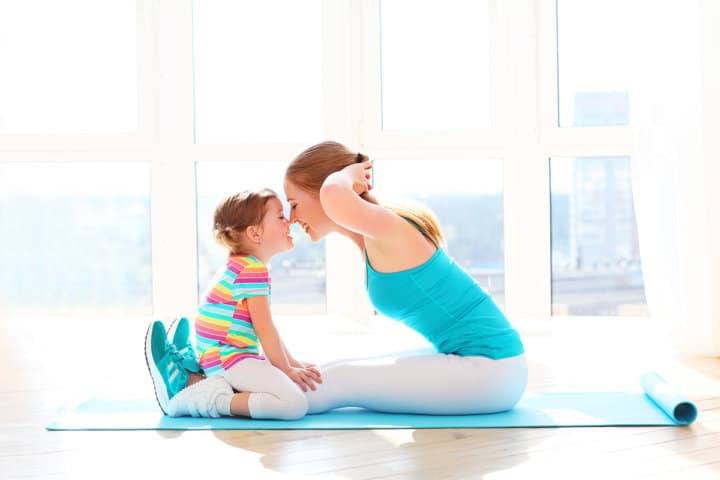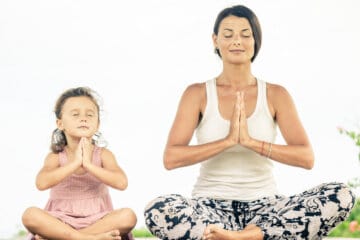An increasing number of studies have shown that our kids are displaying signs of stress and anxiety at a very early age.

Meditation and mindfulness are proven tools that parents and educators can use to cultivate confidence, reduce anxiety, and promote self awareness and self regulation in children.
But how do you teach a young child to meditate?
As a child, my parents taught me how to meditate, even though I didn’t know it was meditation at the time.
Even at a young age, I loved these techniques and asked to meditate regularly.
When I became a mom, I used these same techniques my parents taught me and I was overwhelmed by the positive impact I saw meditation had on my own children.
It helped them to be calm and focus and now they ask me when they want to meditate!
Before I get into how to teach your child to meditate, I think it’s important to share some research on why meditation is so important for kids.
Benefits of Meditation
There are lots of case studies that demonstrate the importance and the impact meditation has on children of all ages.
Many schools have incorporated meditation into the curriculum and have seen amazing results.
In particular, one San Francisco public school found over a 4 year period (in which they incorporated meditation and mindfulness into their school day) suspensions decreased by 79%. In addition, children were performing better academically.
Other schools have also reported similar results, and the research backs these anecdotal experiences. One study found that meditation and mindfulness helped children during test taking by reducing their stress levels and boosting their working memory.
Other studies have shown that meditation can significantly improve behavior in children with ADHD. This study also found that self esteem and relationship quality improved in these children.
You don’t have to wait for your child’s school to implement a meditation program. Even if you don’t meditate, you can still teach your child some simple meditation techniques.
What is Meditation?
Meditation is simply the act of training your mind and body through intentional practice. It’s like a workout for your mind. Taking the time to practice this type of focus and mindfulness helps your child to improve concentration and supports their ability to self regulate.
Meditation can be several different things. It can be:
1. Stillness and Deep Breathing

This is exactly what it sounds like: sitting still and taking deep breaths. Have your child sit cross legged on the floor and close their eyes. Ask them to take several deep breaths.
If you have small children you know how challenging this can be. For this type of meditation the general rule is to practice for 1 minute for each year of their life. This might take some time to build up to, so don’t worry if your 8 year old doesn’t last 8 minutes.
2. Visualization
Visualization is the practice of focusing and imagining while relaxing the body.
With our children, we use visualization in a couple of different ways. We have a visualization book for children that we read at bedtime every night. My 8 year old thinks it’s magic because he says he “can’t help” calming down and relaxing. (If you go on Amazon, you’ll find a wide variety of books from simple picture books for younger children to longer books for older children.)
We also use a visualization technique where we ask the children to close their eyes and imagine a ball rolling through their body, relaxing each part of the body as I say it. We start at their head and name each body part (ears, nose, mouth, arms, fingers toes etc).
When practicing visualization with your child, ask them to sit or lay comfortably with their eyes closed and encourage them to focus on your words and imagine them in their mind.
3. Movement

Yoga and Tai Chi are two examples of movement meditation. The focus is on the pose and breathing. This is a fun one that you can do with your children, as well.
Youtube has some great yoga channels for kids. Check out Cosmic Kids for yoga and mindfulness practices for young children.
Not all forms of meditation will work for each child, so it’s important to try different types of meditation and see which one suits your child’s personality the best.
How Can You Build Meditation Into Your Child’s Day?
Pick a Time of Day When Your Child is Most Likely to Want to Participate
Make sure they aren’t hungry or over tired. Bedtime is our favorite time to meditate. It also helps calm the kids down and fall asleep quicker. A total win-win in my book.
Make a Meditation Space and Set the Tone For the Meditation
If you’re doing yoga, lay out a yoga mat, clear some space in the living room, light a candle etc. If you are practicing visualization you can dim the lights or make a nest of pillows for your child to sit in comfortably.
Don’t Give Up
If after a couple of tries your child is still not willing to participate take a break for awhile and come back to it. My son did not like the meditation book I mentioned above at first. I let it be and a year after we got the book, I tried the book again and now he loves it.
Build Your Own Mindfulness and Meditation Routine
Leading by example is a great way to help your child begin meditation. Have your child sit with you while you do some deep breathing, even if they are not actively participating. Young children often mimic their parents so seeing you practice meditation is one way to pique their interest.
My final piece of advice: Have fun with it. Meditating is not supposed to be stressful and if your child doesn’t take to it immediately don’t panic and don’t force it. Either try a different type of meditation or let it go for a while and come back to it.




1 Comments